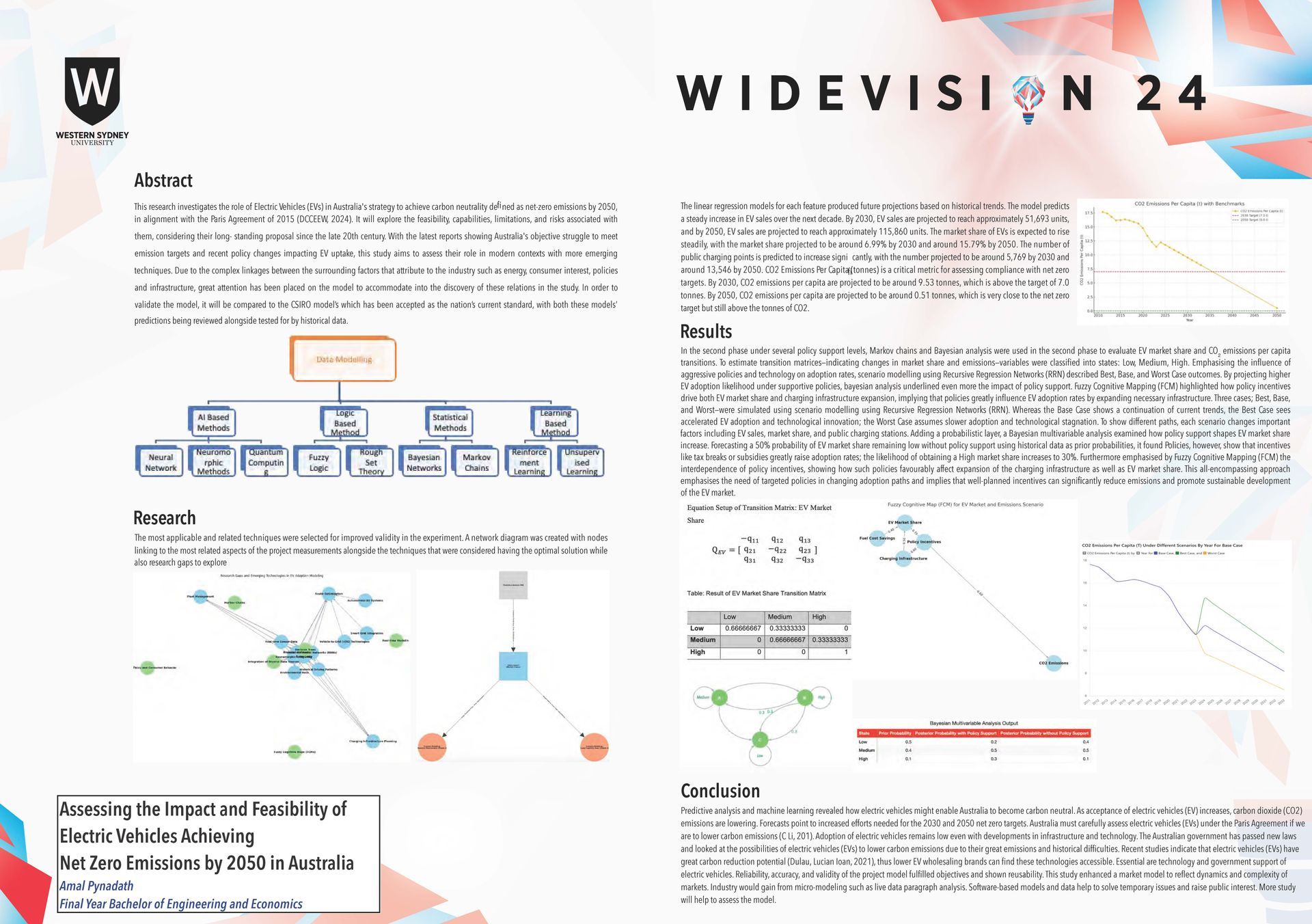Amal Pynadath
Assessing the Impact and Feasibility of Electric Vehicles Achieving Net Zero Emissions by 2050 in Australia: A Modern Analytical Approach
PROJECT
This research project investigates the role of Electric Vehicles (EVs) in Australia's strategy to achieve carbon neutrality defined as net-zero emissions by 2050, in alignment with the Paris Agreement of 2015 (DCCEEW, 2024).
It will explore the feasibility, capabilities, limitations, and risks associated with them, considering their long-standing proposal since the late 20th century. With the latest reports showing Australia's objective struggle to meet emission targets and recent policy changes impacting EV uptake, this study aims to assess their role in modern contexts with more emerging techniques.
Due to the complex linkage between the surrounding factors that attribute the industry such as energy, consumer interest, policies and infrastructure, great attention has been placed on the model to accommodate into the discovery of these relations in the study. Thereby the report evaluates the effectiveness of using a multifaceted framework in forecasting electric vehicle (EV) adoption and its role in supporting Australia’s 2050 net-zero emissions target, with a focus on the application of emerging technologies to enhance analysis and EV industry related advancements.
In order to validate the model, it will be compared to the CSIRO model’s which has been accepted as the nation’s current standard, with both these models’ predictions being reviewed alongside tested for by historical data.
By doing so, it will investigate the accuracy, reliability, and adaptability of the model in context to both short term periods and long-term policy planning. From there recommendations and applications extrapolated from insights of the study will be given

With respect for Aboriginal cultural protocol and out of recognition that its campuses occupy their traditional lands, Western Sydney University acknowledges the Darug, Eora, Dharawal (also referred to as Tharawal) and Wiradjuri peoples and thanks them for their support of its work in their lands in Greater Western Sydney and beyond.
Acknowledgement of Country
Western Sydney University Copyright © 2004-2024 | ABN 53 014 069 881 | CRICOS Provider No: 00917K | TEQSA Provider ID: PRV12061 (Australian University)

